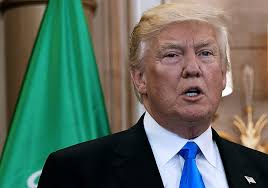WASHINGTON: President Donald Trump announced sweeping tariffs on imports from Canada, Mexico, and China on Saturday, escalating trade tensions and sparking warnings of economic fallout, inflation, and strained international relations. The move, framed by the White House as a response to unresolved concerns over fentanyl trafficking, undocumented migration, and trade deficits, imposes a 25% tariff on most goods from Canada and Mexico (with Canadian energy products taxed at 10%) and a 10% tariff on Chinese imports. The tariffs take effect Tuesday but exempt goods shipped before Saturday.
Economic Warnings and Political Divide
Economists and industry leaders warn the tariffs could destabilize the U.S. economy, disrupt supply chains, and fuel inflation. Gregory Daco, chief economist at EY-Parthenon, projected the tariffs could reduce U.S. economic output by 1.5% in 2025 and 2.1% in 2026, while raising inflation by 0.7 percentage points initially and 0.4 points annually. "Higher prices will dampen consumer spending and business investment," Daco said, adding that prolonged trade uncertainty could pressure the Federal Reserve to maintain restrictive interest rates.
Congressional reactions split sharply along party lines. Republicans praised Trump’s “resolve” to address border security and trade imbalances. House Ways and Means Chair Jason Smith (R-Mo.) called the tariffs a “powerful message” to nations “failing to halt illegal drugs and migrants.” Democrats, however, slammed the move as inflationary and reckless. Rep. Richard Neal (D-Mass.) accused Trump of breaking campaign promises to lower costs, saying, “The American people will pay the price.”
Matt Blunt of the American Automotive Policy Council warned that tariffs would undermine companies’ compliance with the U.S.-Mexico-Canada Agreement (USMCA), a Trump-negotiated trade pact requiring stringent regional sourcing. Canadian auto parts leader Flavio Volpe predicted a shutdown of North American auto production “within a week,” likening the impact to pandemic-era supply chain chaos.
Mixed Business Reactions
While most U.S. business groups opposed the tariffs, calling them a “recipe for decline,” some industries welcomed the protectionist measures. The Coalition for a Prosperous America, representing domestic manufacturers, hailed Trump’s “bold step” to reverse “decades of failed trade policies.”
Food industry leaders warned of rising grocery prices, as tariffs on imported produce could strain year-round availability. “Consumers are already concerned about costs—this will only make it worse,” said Leslie Sarasin of FMI — The Food Industry Association.
Global Diplomatic Strains
The tariffs clash with the spirit of the USMCA, which eliminated most tariffs between the three nations. Trade data due this week is expected to show the U.S. deficit with Canada and Mexico tripled since 2016, undermining Trump’s goal of rebalancing trade through the pact.
Canadian leaders blasted the move as counterproductive. Ontario Premier Doug Ford accused Trump of “hurting your own people,” warning of factory slowdowns and job losses. Meanwhile, China’s 10% tariff builds on existing Trump-era duties, though business groups expressed relief the rate fell short of Trump’s campaign threat of 60%.
Path to Resolution Uncertain
A White House official outlined vague benchmarks for lifting the tariffs, including “zero Americans dying from fentanyl” and “only legal immigration.” Secretary of State Marco Rubio and policy chief Stephen Miller are leading negotiations with the three nations, though specifics remain unclear.
As tensions mount, analysts warn the tariffs risk sparking a North American trade war, destabilizing economies and testing alliances critical to U.S. supply chains. With inflation fears looming and political divisions deepening, the long-term fallout of Trump’s latest trade gambit remains uncertain.
(Image credit: Observer Research Foundation)

